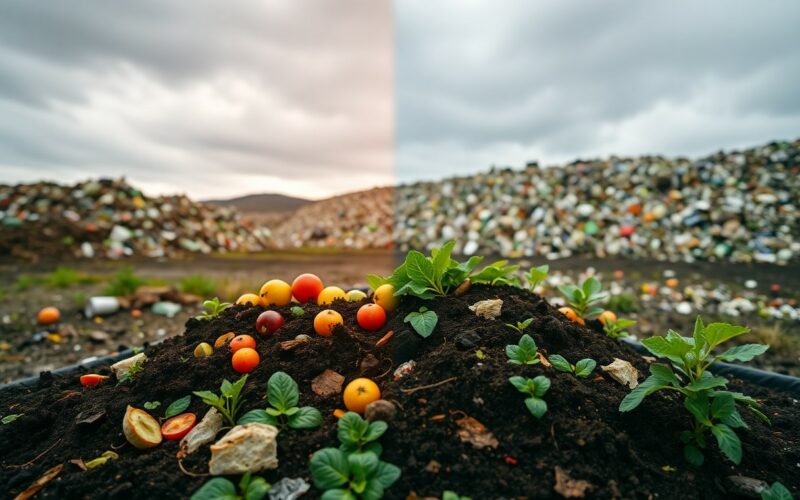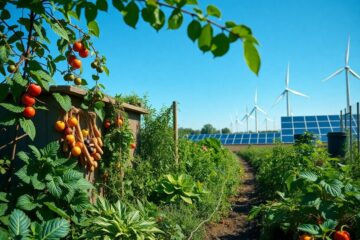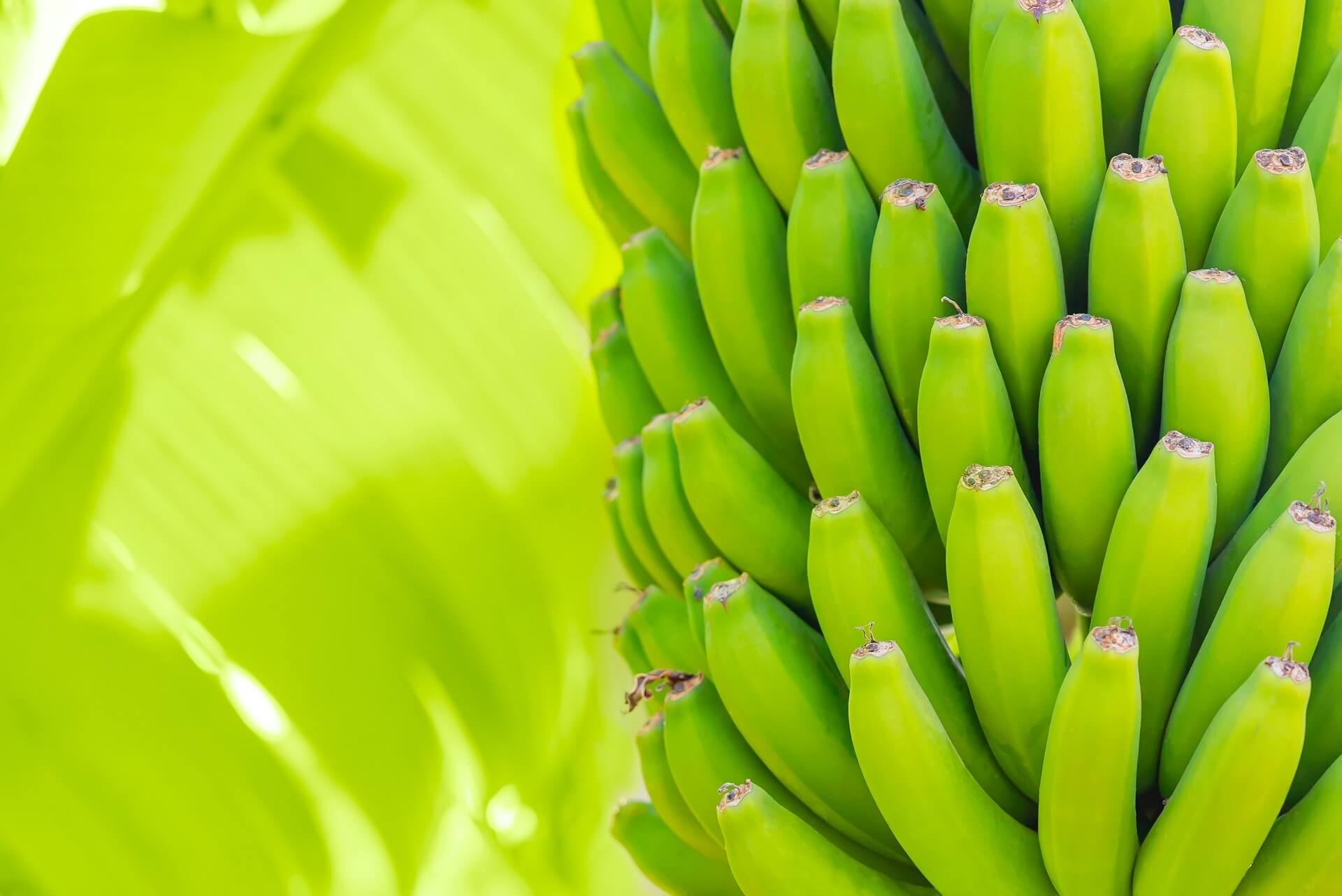Most people may not realize the significant impact your waste disposal choices can have on the environment. By choosing home composting, you reduce landfill waste, create nutrient-rich soil, and minimize greenhouse gas emissions. On the other hand, while landfills allow for the convenient disposal of waste, they can produce harmful toxins and contribute to environmental degradation. This blog post will explore the environmental benefits of both composting and landfilling, empowering you to make more informed decisions about your waste management practices.
Table of Contents
Key Takeaways:
- Home composting reduces the amount of organic waste sent to landfills, thus decreasing methane emissions, a potent greenhouse gas.
- Composting enriches soil health, which can promote plant growth and reduce the need for chemical fertilizers.
- Landfills can capture and manage gases released from decomposing waste, enabling energy generation and reducing impacts on air quality.
- Home composting fosters community engagement and awareness of waste management, encouraging sustainable practices among households.
- Landfill management strategies can improve the longevity of waste sites, while composting contributes to a circular economy by recycling nutrients back into the ecosystem.
Understanding Home Composting
The process of home composting has gained immense popularity as a sustainable practice for managing organic waste. It allows you to transform your kitchen scraps and yard waste into nutrient-rich compost that can benefit your garden and reduce your environmental footprint. By understanding the intricacies of home composting, you can make an informed decision about how to manage waste in your household. For further insights into eco-friendly waste management methods, consider exploring Composting versus Recycling: Differences and Benefits.
What is Home Composting?
Across various communities, home composting serves as an effective method for reducing the volume of waste that ends up in landfills. This process involves collecting organic materials from your home, such as fruit and vegetable scraps, yard waste, and paper products. By breaking these materials down through natural processes, you can create compost that enriches your soil and promotes healthy plant growth.
Home composting not only facilitates waste reduction but also plays a significant role in conserving water and improving soil quality. The compost created can help retain moisture in the soil, reducing the need for frequent watering. Furthermore, you can take pride in using a product you produced yourself, contributing to a more sustainable lifestyle.
The Composting Process
The composting process typically occurs through aerobic decomposition, where microorganisms break down organic matter in the presence of oxygen. You begin by assembling a compost pile or bin with layers of materials, incorporating both green (nitrogen-rich) and brown (carbon-rich) materials. Regular aeration, moisture management, and monitoring of temperature will enhance the decomposition process and ensure that the composting occurs efficiently.
With this basic understanding of composting, you can experiment with various methods, such as cold composting and hot composting, to see which best suits your needs. Each method has unique advantages regarding time, temperature, and the kind of materials you can use.
What you include in your compost pile and how you manage it greatly influence its success. Be attentive to the balance of ingredients, moisture levels, and aeration to produce high-quality compost. Active composting can take several weeks to a few months, depending on factors such as temperature and the type of materials used.
Types of Materials Suitable for Composting
Materials that you can compost generally fall into two categories: green materials, which provide nitrogen, and brown materials, which supply carbon. When combined in the right proportions, these materials can create an environment conducive to microbial activity, leading to effective composting. Below is a breakdown of suitable materials:
| Green Materials | Brown Materials |
| Fruit and vegetable scraps | Dried leaves |
| Grass clippings | Cardboard |
| Coffee grounds | Eggshells |
| Plant trimmings | Pine needles |
Composting isn’t limited to just food scraps; you’ll want to include various organic materials to enhance the efficiency and quality of your compost. The combination of both nitrogen-rich green and carbon-heavy brown materials helps create a balanced and fertile compost. This process not only reduces landfill waste but also enriches your soil and promotes healthier plant growth.
Additionally, it’s crucial to be cautious about the types of materials you add to your compost pile. Here is a list of potentially harmful materials to avoid:
- Meat
- Dairy
- Oils and fats
- Pet waste
- Diseased plants
This careful consideration can help you achieve successful composting while avoiding unpleasant odors and pest problems that arise from inappropriate materials.
Benefits of Home Composting
Process benefits arise from engaging in home composting practices, which not only contribute to waste reduction but also foster a more sustainable gardening approach. When you compost, you divert organic materials from landfills, which helps minimize landfill overpopulation and methane emissions—a potent greenhouse gas released during the decomposition of waste. Moreover, using compost improves your soil structure and nutrient content, leading to healthier plants and better crop yields.
The broader environmental repercussions of home composting showcase its significance. This activity serves as a practical approach to saving resources by reducing the need for chemical fertilizers and decreasing the carbon footprint associated with manufacturing and transportation. Additionally, composting promotes biodiversity by creating a healthy ecosystem in your garden.
Consequently, engaging in home composting yields both personal and planetary benefits, making it a worthwhile endeavor. It allows you to take control of your waste disposal harmoniously with the environment while enriching your garden. Investing in composting practices not only enhances your gardening experience but also positively impacts the world around you.
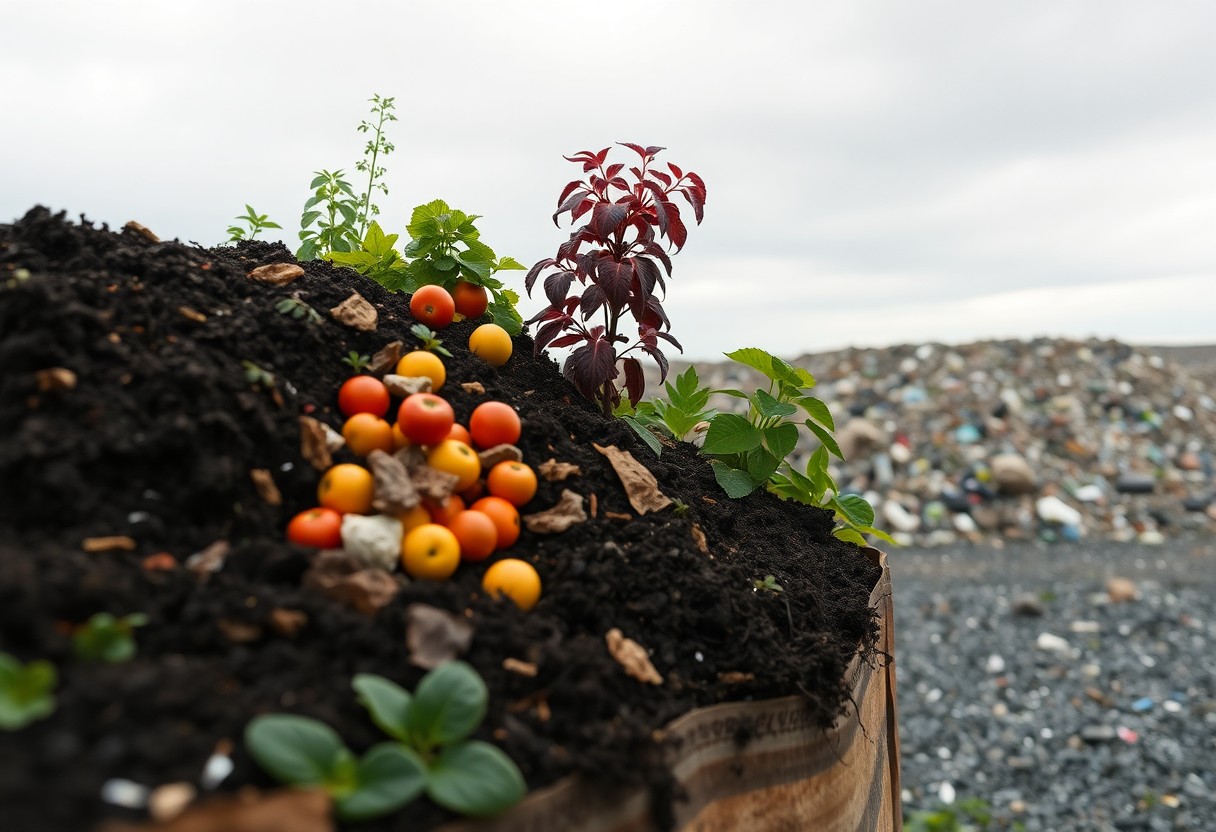
The Role of Landfills
What is a Landfill?
There’s a significant misconception about what a landfill truly is. Behind the scenes, a landfill is a designated area where waste materials are buried and decomposed over time. Unlike illegal dumping sites, landfills are managed by local governments and adhere to strict regulations to ensure they minimize environmental and public health risks. Landfills serve as imperative systems for waste management, collecting garbage generated by residential, commercial, and industrial entities and providing a controlled environment for waste disposal.
In essence, landfills exist to tackle the ever-growing problem of waste disposal. They help prevent garbage from piling up in unauthorized locations, which could result in hazardous conditions. Well-operated landfills can reduce the volume of waste effectively, allowing some materials to break down naturally, while others are isolated to prevent contamination and maintain public safety.
Types of Landfills
Behind the concept of landfills lies a range of types tailored to different waste management needs. The most common types are:
| Municipal Solid Waste Landfills | Designed to handle non-hazardous waste generated from homes and businesses. |
| Hazardous Waste Landfills | Specifically designed for harmful wastes that require special handling and containment. |
| Construction and Demolition Landfills | For disposing of debris from construction sites and renovation projects. |
| Industrial Waste Landfills | For dangerous materials generated by manufacturing processes. |
| Waste-to-Energy Landfills | Facilities that convert waste materials into energy through combustion. |
To understand the difference, consider that each landfill is equipped to handle specific types of waste. You should be aware that each landfill also has regulations and operating processes unique to its classification, which helps to safeguard the environment.
- Municipal Solid Waste Landfills
- Hazardous Waste Landfills
- Construction and Demolition Landfills
- Industrial Waste Landfills
- Waste-to-Energy Landfills
Knowing the types of landfills can help inform your decisions about waste management and responsible disposal practices.
How Landfills Operate
Above all, you might wonder how landfills are designed to minimize their impact on the environment. Landfills operate on a series of engineering principles that involve laying down layers of compacted waste, clay, soil, and synthetic liners to prevent leachate, a toxic liquid that can form when waste decomposes, from contaminating surrounding land and water sources. Each layer of waste is compacted and covered daily to reduce odors and pests.
Landfills also have systems in place to manage gas emissions produced by decomposing waste, including methane, which can be harnessed as a renewable energy source. These operations are monitored regularly to ensure compliance with environmental laws and regulations, allowing for responsible waste management.
Consequently, understanding how landfills operate provides you insights into the complexities involved in waste disposal. From waste compaction to gas collection systems, the environmental safeguards put in place are crucial for reducing ecological footprints while facilitating the safe containment of our waste.
Environmental Impacts of Landfills
Between the benefits and challenges, landfills can have significant environmental impacts. On one hand, when managed correctly, they can serve a vital role in waste disposal, helping mitigate issues associated with litter and illegal dumping. However, they can also produce negative consequences, including greenhouse gas emissions, soil and water contamination, and localized air quality problems.
Understanding the environmental impacts of landfills is imperative for making informed decisions regarding waste management practices. Improperly managed landfills can exacerbate environmental issues, such as enhanced climate change through methane emissions. However, modern landfill technologies work toward minimizing these negative effects.
In the long run, understanding the entire picture helps you recognize the role landfills play in waste management. They can be both a necessary part of waste disposal and a source of environmental concern, making it important to weigh your options when considering how to dispose of waste sustainably.
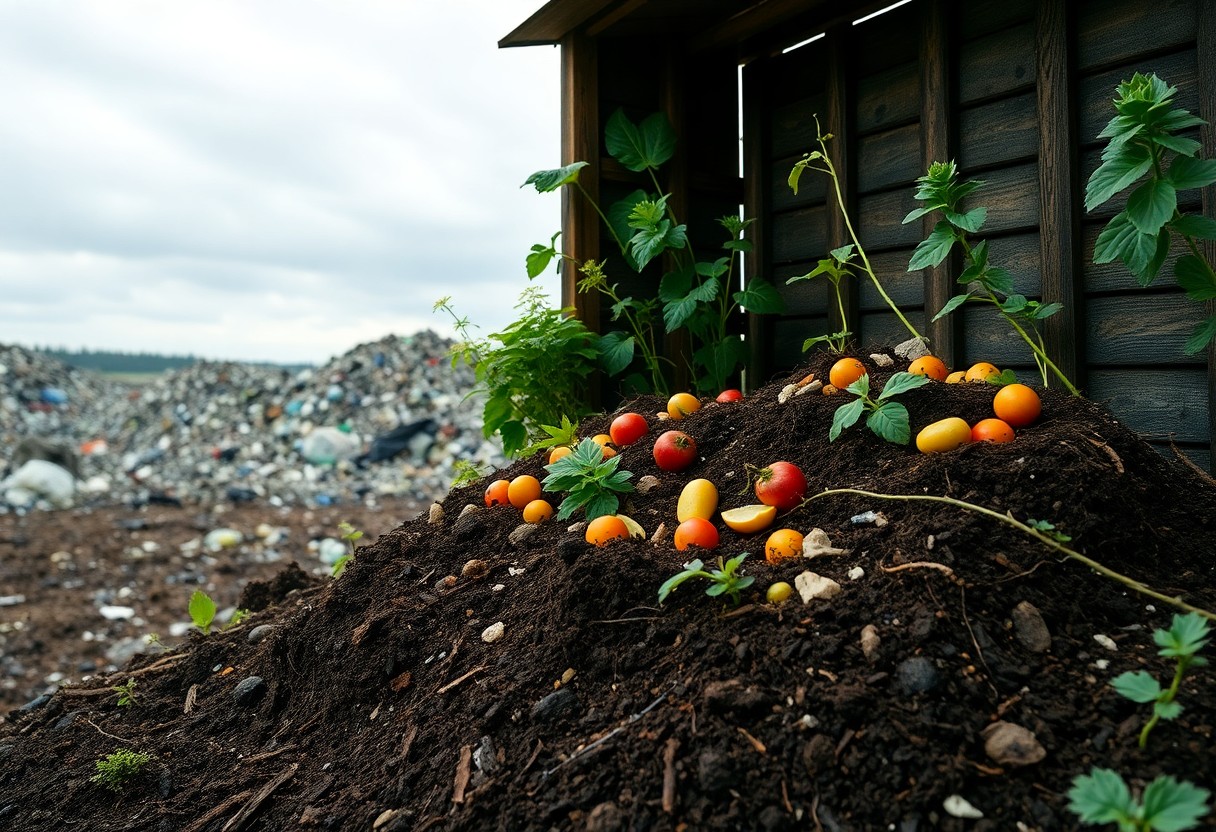
Environmental Benefits of Home Composting
All around the world, more people are recognizing the significant environmental benefits of home composting. By turning your kitchen scraps and yard waste into valuable compost, you not only reduce waste but contribute positively to the environment. For more information about effective composting practices, check out the Composting | US EPA.
Soil Enrichment and Fertility
On a fundamental level, composting enriches your soil significantly. The nutrient-rich compost you create enhances your garden’s fertility, helping plants thrive. By adding organic matter into the soil, you not only provide necessary nutrients but also improve soil structure, enhance its ability to hold moisture, and promote healthy microbial activity. This contributes to a more sustainable ecosystem and allows you to grow healthier, more productive plants.
On a larger scale, healthy soil is vital for supporting biodiversity. The microorganisms and beneficial insects that flourish in compost-enriched soil can create a balanced and resilient ecosystem. Ultimately, you are directly contributing to a rich environment that supports various forms of life while also improving the quality of your agricultural yields.
Reduction of Greenhouse Gas Emissions
Below the surface, your decision to compost significantly reduces greenhouse gas emissions. When organic waste like food scraps and yard debris is disposed of in landfills, it decomposes anaerobically, leading to the release of methane—a potent greenhouse gas that contributes to climate change. By composting at home, you mitigate this impact and help to keep these harmful gases out of the atmosphere.
A successful composting routine not only provides a method to recycle organic waste but also lessens your overall carbon footprint. Each batch of compost you produce translates to less waste entering landfills and a decreased likelihood of greenhouse gases entering the stratosphere. Supporting a healthier planet is achievable through effective composting practices!
Conservation of Water Resources
Composting can also lead to significant conservation of water resources. Improved soil structure and increased organic matter from compost can increase your garden’s water retention capacity. This means that during dry spells, your plants benefit from the moisture stored in the soil, reducing the need for supplemental watering and ultimately helping to conserve this vital resource.
Considering the global water crisis, your efforts in composting reflect a proactive approach to sustainability. By enhancing your soil’s ability to retain moisture, you contribute to the conservation of water resources while also supporting your plants’ growth, making your gardening practices more efficient and responsible.
Reduction of Waste Sent to Landfills
Soil waste reduction is one of the most rewarding aspects of home composting. When you compost, you drastically decrease the amount of organic material that ends up in landfills. This not only minimizes the environmental impact associated with waste disposal but also extends the lifespan of your local landfill. As landfills reach capacity, they pose a range of ecological problems, making your composting efforts even more vital.
For instance, by composting just a portion of your food scraps and yard waste, you can significantly lower your household’s contribution to landfill waste. The simple act of composting transforms waste into a resource, fostering a sustainable cycle that benefits both you and the environment.
Environmental Impact of Landfills
Unlike home composting, which provides a sustainable method of recycling organic waste, landfills have significant environmental repercussions. You should be aware that when waste is buried in a landfill, it not only occupies valuable land space but also leads to a variety of ecological concerns that can persist for decades. The sheer volume of waste in landfills contributes to the contamination of soil and groundwater, which can have dire consequences on local environments and communities.
Leachate and Its Consequences
Impact from landfills extends particularly to a byproduct known as leachate, a toxic liquid formed when rainwater filters through waste materials. This leachate can contain harmful chemicals, heavy metals, and pathogens that pose serious risks to water quality and public health. Once leachate seeps into the ground or nearby water sources, it can lead to widespread contamination that requires costly clean-up efforts and can harm aquatic ecosystems significantly.
The potential consequences of leachate contamination are extensive. Not only does it affect drinking water supplies, but it can also disrupt local flora and fauna, complicating both natural habitats and agricultural practices. You may find that areas surrounding landfills experience compromised environmental integrity, which can lead to long-term degradation of valuable ecosystems.
Methane Emissions and Climate Change
Along with leachate, another major concern associated with landfills is methane emissions. As organic matter decomposes anaerobically (without oxygen), methane—a potent greenhouse gas—escapes into the atmosphere, contributing to climate change. Methane is over 25 times more effective at trapping heat in the atmosphere than carbon dioxide over a 100-year period, making it a significant contributor to global warming.
To mitigate climate change, you should recognize that reducing landfill usage through composting and recycling can significantly decrease methane emissions. This helps not only to slow the rate of climate change but also improves air quality, making it an imperative aspect of waste management practices. By choosing alternative disposal methods, you can play a role in reducing your carbon footprint and promoting a healthier planet.
Habitat Disruption and Biodiversity Loss
Methane emissions also tie into another critical concern: habitat disruption and biodiversity loss. Landfills occupy land that could otherwise be preserved as natural habitats, leading to fragmentation of ecosystems and the displacement of wildlife. You may notice that as natural areas are sacrificed for landfill expansion, the delicate balance of local ecosystems can become severely compromised.
Leachate and landfill operations can create a hostile environment for many species, impacting their survival and reproductive rates. You should also consider how reduced biodiversity not only affects wildlife but also undermines the health of ecosystems, which play vital roles in services such as pollination and waste decomposition. The reduction in species diversity can have cascading effects that disrupt entire food webs, making it imperative for you to understand the broader implications of landfill waste management.
Long-Term Land Use Issues
The challenges associated with landfills don’t end when the site is filled; in fact, they can compound over time. Long-term land use issues arise as formerly productive land becomes a permanent dumping site that cannot be easily repurposed. You may find that once a landfill reaches capacity, it is often capped and left to degrade, restricting future use options significantly.
In addition, the ongoing risk of leachate and methane emissions means that repurposing former landfill sites can be highly complex and expensive. Dealing with land that has been contaminated requires extensive environmental assessments and remediation efforts, making it less viable for new development projects. You should keep in mind that the land that could support housing, agriculture, or green spaces becomes locked into a cycle of deterioration, emphasizing the importance of alternative waste management approaches.
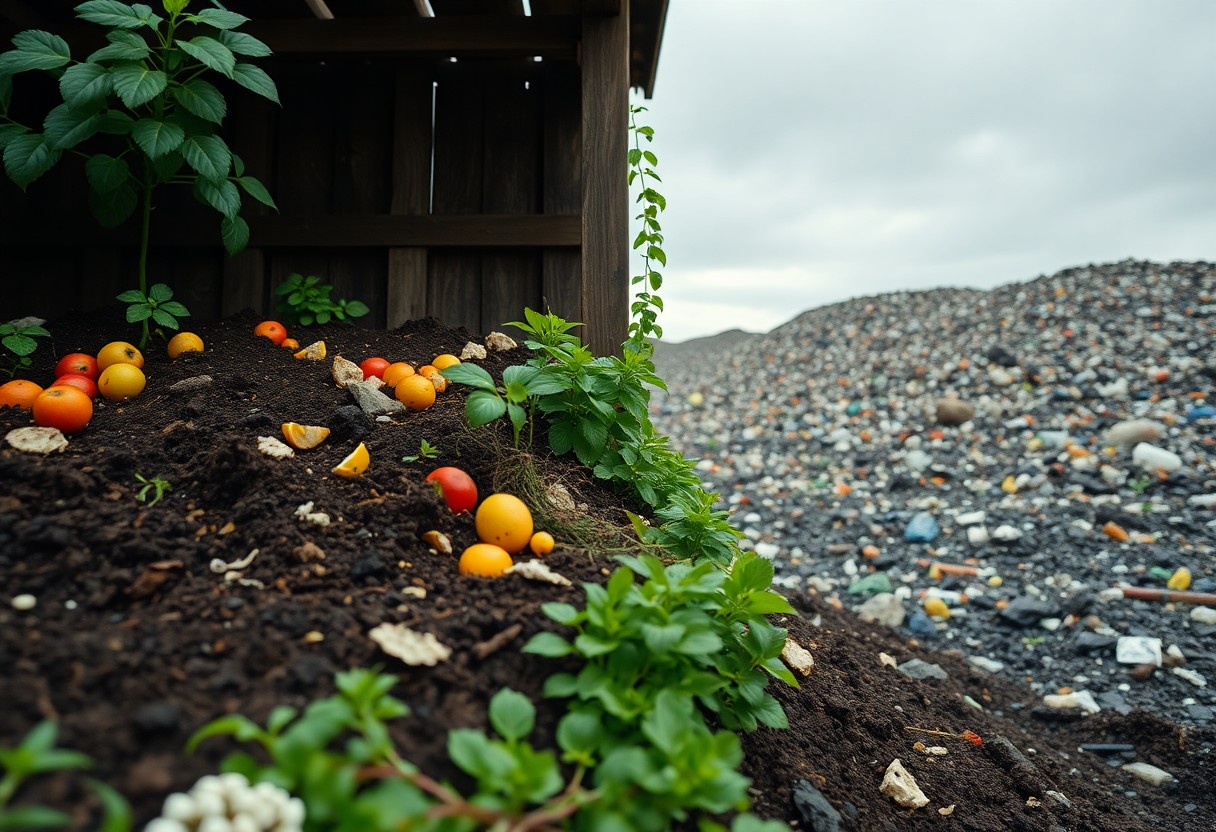
Comparing Home Composting and Landfills
Keep in mind that both home composting and landfills serve as methods for waste management, yet they operate under vastly different principles and contribute differently to the environment. Below is a comparison of the two approaches.
| Aspect | Home Composting | Landfill |
|---|---|---|
| Resource Recovery | Biodegradable materials are transformed into nutrient-rich compost. | Limited recovery; some recycling efforts occur, but a large amount is buried. |
| Energy Use & Emissions | Lower energy input; minimal emissions released if managed properly. | High energy consumption; significant greenhouse gas emissions, especially methane. |
| Community Engagement | Encourages community participation and education about sustainable practices. | Less community involvement; often seen as a necessary evil. |
| Economic Implications | Lower costs for households; reduces waste collection expenses. | High costs associated with transporting and managing waste. |
Resource Recovery
For you, resource recovery is crucial in reducing waste and enhancing soil health. With home composting, you can transform your food scraps and yard waste into nutrient-rich compost, which can improve your garden’s soil structure and support plant growth. This sustainable practice effectively turns what would be waste into a valuable resource, promoting environmental stewardship in your community.
On the other hand, landfills present a much less efficient method of resource recovery. While some materials can be recycled from the landfill, most of the waste is buried and left to decompose slowly, leading to lost opportunities to reclaim valuable materials that could otherwise benefit the environment.
Energy Use and Emissions
Any comparison of energy use and emissions shows notable differences between home composting and landfills. Home composting typically requires very little energy input, aside from the occasional turning of the pile, making it a much more energy-efficient option. In contrast, landfills often involve extensive machinery for transportation and maintenance, contributing to significant greenhouse gas emissions, primarily in the form of methane—a potent climate change contributor.
For instance, the decomposition process in landfills generates methane gas, which is many times more effective at trapping heat in the atmosphere compared to carbon dioxide. This highlights the importance of choosing home composting, as it generates minimal emissions while simultaneously enhancing soil health.
Community Engagement and Awareness
Comparing the level of community engagement and awareness between home composting and landfills reveals a stark difference. You can directly contribute to a more sustainable environment through home composting, engaging with neighbors in workshops or community programs that promote environmentally-friendly practices. Such involvement fosters a sense of collective responsibility for waste management.
On the flip side, landfills are typically viewed as distant entities, leading to lower levels of community involvement and awareness regarding waste management. This disengagement can hinder opportunities for education on sustainability and the potential positive impacts of composting.
Landfills also create a perception problem; many people are unaware of the long-term effects they have on the local environment. You might feel disconnected from waste management issues if your waste simply disappears, resulting in a lack of motivation to engage in more sustainable practices.
Economic Implications
Implications of economic choices between home composting and landfills are significant. Home composting can lead to lower costs for households as it minimizes the volume of waste needing collection, subsequently reducing your waste disposal fees. Additionally, using compost in your garden can lead to decreased reliance on commercial fertilizers, saving you money in the long run.
Contrastingly, landfills entail substantial economic burdens. You often bear these costs indirectly through your taxes, which fund landfill operations, maintenance, and the management of environmental issues related to waste. As landfills become fuller, the expense of building new ones or expanding current sites can lead to increased fees for your waste collection services.
But the hidden costs of landfilling—such as environmental cleanups and health impacts of local pollution—may not be immediately apparent. Investing in home composting not only benefits you financially in the long term but also contributes positively to the economy by promoting local gardening and agriculture. Thus, shifting toward composting can emerge as both an environmentally and economically wise decision.
Case Studies
Your understanding of the environmental benefits of home composting versus landfill management can be greatly enhanced by examining various case studies that illustrate successful implementations of each method. The following list provides a detailed look at various programs and their measurable impacts:
- Seattle, Washington: Since implementing its composting program in 2005, the city has diverted over 400,000 tons of organic waste from the landfill each year, reducing greenhouse gas emissions by roughly 25,000 metric tons.
- San Francisco, California: This city has reached a 80% diversion rate through its mandatory composting program, which has resulted in nearly 1.6 million tons of organic waste being composted since 2002.
- Portland, Oregon: With its residential composting program, more than 60% of its organic waste is composted, reducing trash sent to landfills by approximately 70,000 tons annually.
- New York City: NYC’s composting initiatives have processed over 100,000 tons of organic materials since its launch program, which also emphasizes community involvement in recycling efforts.
- Denver, Colorado: Thanks to its composting pilot program, the city has successfully diverted 12,000 tons of food waste from landfills in just the first year of operation.
Successful Home Composting Programs
Behind the scenes of successful home composting programs lies a combination of community engagement and accessible infrastructure. For instance, Los Angeles initiated a home composting initiative where residents received free compost bins and training sessions in composting techniques. This program not only encouraged individual responsibility but also fostered community spirit. As a result, the city witnessed a 30% decrease in organic waste sent to landfills within three years.
Additionally, in Melbourne, Australia, local governments partnered with residents in a rewarding program that offered discounts for those who participated in home composting. The program reported an impressive 20% increase in composting participation, leading to the diversion of over 25,000 tons of food scraps annually. This illustrates how effective public engagement can encourage sustainable practices at the household level.
Innovative Landfill Management Techniques
Techniques in landfill management have advanced significantly over recent years, focusing on minimizing environmental impact while maximizing the utility of landfills. For example, state-of-the-art landfill gas recovery systems are being utilized to capture methane gas emitted from decomposing waste. This methane can then be converted into renewable energy, reducing reliance on fossil fuels and providing a viable energy source for nearby communities, as seen in Germany’s high-tech landfills.
A notable example can be observed in Singapore, where cutting-edge landfill engineering includes leachate recirculation systems to hasten waste decomposition while also capturing valuable nutrients. These methods have allowed Singapore to manage landfill waste more efficiently while maintaining its commitment to sustainability.
Community Composting Initiatives
After realizing the benefits of composting at a larger scale, communities have started to band together to create community composting initiatives. Such programs not only provide residents with an eco-friendly method to dispose of their organic waste but also serve as educational platforms about the importance of composting. In Montreal, Canada, community gardens implemented a composting initiative where volunteers manage compost bins, allowing the neighborhood to turn food scraps into nutrient-rich soil. Participation rates soared, with over 2,000 households involved.
Consequently, community composting has shown promising results, reducing the amount of waste sent to landfills and creating a communal space that fosters a sense of belonging. Such initiatives have the added benefit of offering workshops that educate residents about sustainable practices, which further strengthens community bonds while enhancing environmental stewardship.
Lessons Learned from Both Approaches
Techniques employed in both home composting and landfill management reveal valuable lessons that can be applied to enhance sustainability efforts worldwide. For example, the importance of community involvement and education has emerged as a common theme among successful composting programs. Engaging residents in the process fosters a sense of responsibility and accountability toward waste management, as seen in programs across Melbourne and Los Angeles.
Moreover, landfill advancements demonstrate that waste management isn’t just about disposal but also resource recovery, encouraging the integration of sustainable practices into traditional waste management. The collaboration between communities and local governments plays a pivotal role in developing innovative solutions that help reduce environmental impacts.
Management of waste through both composting and landfill initiatives speaks to the current need for sustainable practices. With the insights gained from these case studies, you can better appreciate how each contributes to environmental health, providing you with a framework to advocate for similar programs in your community.
Summing up
With this in mind, it’s important for you to consider the environmental benefits of both home composting and landfilling. While composting allows you to transform your organic waste into nutrient-rich soil, which reduces landfill contributions and fosters a circular economy, it’s important to recognize that landfills still play a role in waste management. They can be managed more sustainably, with practices that capture methane emissions and reduce environmental harm. Assessing your local conditions will help you decide the best waste management strategy that aligns with your values and immediate environment.
Ultimately, whether you choose to compost at home or support landfill operations with improved practices, your informed choice can contribute to a healthier planet. Engaging in composting not only benefits your garden but also reduces the burden on landfills. If you’re interested in learning more about composting, you can explore resources such as Composting 101. By educating yourself and taking action, you play a significant role in fostering sustainability in your community.
FAQ
Q: What are the main environmental benefits of home composting?
A: Home composting reduces the amount of organic waste sent to landfills, decreasing methane emissions, a potent greenhouse gas. It also enriches soil, improving its quality and its ability to retain water. Additionally, composting reduces the need for chemical fertilizers, promoting healthier ecosystems and biodiversity.
Q: How does landfill disposal affect the environment?
A: Landfills can lead to significant environmental issues, including soil and water contamination from leachate, a toxic liquid produced as waste decomposes. Furthermore, decomposing organic matter in landfills emits methane, contributing to climate change. Landfills also occupy land that could be used for other purposes and can negatively impact local wildlife habitats.
Q: Is home composting cost-effective compared to landfill fees?
A: Yes, home composting is generally more cost-effective. While there may be initial setup costs for compost bins, the long-term savings on waste disposal fees, combined with the benefits of creating your own compost for gardening or landscaping, make it economically advantageous over time.
Q: Are there any disadvantages to composting at home?
A: While home composting has many benefits, it can require some effort and maintenance, such as turning the compost and monitoring moisture levels. It might also attract pests if not managed properly. Those with limited space or yard area may find it challenging to compost effectively, but indoor composting options like worm bins do exist.
Q: How do the byproducts of composting compare to landfill waste?
A: The byproducts of composting—nutrient-rich compost—are highly beneficial for soil health and plant growth. In contrast, the byproducts of landfill waste can be harmful, including toxic leachate and greenhouse gases. Compost contributes positively to the environment, while landfill waste can create long-lasting ecological damage.
Q: Can the community benefit from home composting initiatives?
A: Absolutely! Home composting initiatives can foster community engagement by educating residents on sustainable practices. They can lead to reduced waste collection costs for municipalities and improve local soil health through composting workshops and community gardens that utilize compost.
Q: What is the role of education in promoting composting over landfilling?
A: Education plays a significant role in encouraging individuals and communities to choose composting. By providing information about the environmental benefits, practical methodologies, and community success stories, people become more motivated to adopt composting practices. Well-informed citizens are more likely to participate in reducing waste and enhancing their local environment.

Our contributing author is a passionate advocate for eco-friendly living and sustainability. With a background in eco-life, they are dedicated to inspiring and empowering individuals to adopt environmentally conscious lifestyles. Through insightful articles, they share practical tips, innovative solutions, and thought-provoking perspectives to promote a greener, more sustainable world. Join them on the journey towards eco-smart living and discover how small choices can make a big impact. 🌱

